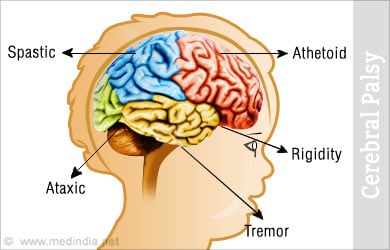- Definition of Cerebral Palsy - (http://cerebralpalsy.org/about-cerebral-palsy/what-is-cerebral-palsy/)
- Augmentative and alternative communication - (http://en.wikipedia.org/wiki/augmentative_and_alternative_communication)
- Types of Cerebral Palsy - (http://cerebralpalsy.org/about-cerebral-palsy/types/)
About
Cerebral palsy is a non-progressive motor neurological disorder that manifests during the early developmental stages of life.
Cerebral palsy is a term used for describing a group of motor disorders that result from damage to the developing brain. The motor disorders refer to the impaired control of voluntary movement of body parts. The disorder affects body movement, muscle control, muscle coordination, muscle tone, reflex, posture and balance. This disorder is non-progressive, that is, the condition may not improve or worsen with time or growth. It is not a disease, but is a developmental neurogenic disorder that results from abnormal brain function.

Facts on Cerebral Palsy
- Cerebral palsy is a motor disorder and does not necessarily deter the intellectual capabilities of the individual.
- Cerebral palsy is the result of brain damage during prenatal, perinatal or postnatal period.
- Cerebral palsy may be different for each individual. Some of the types of cerebral palsy are spastic, ataxic and athetoid. Mixed conditions also exist in an individual.
- Cerebral palsy is not a curable condition.
- This condition is not contagious and does not spread on contact or in any way.
- Cerebral palsy is non-progressive. The condition does not worsen or improve as the child grows.
- Cerebral palsy is not life threatening.
- Cerebral Palsy may be accompanied by seizures, disabilities of hearing or vision or even mental retardation.
- Since it is a motor disorder, a child with cerebral palsy may have difficulties in production of vocal sounds, impaired breathing patterns, less control on tongue and vocal cords movements.
- Some of the alternative medicines are claimed to improve the condition of cerebral palsy, but have never been proven to be helpful. Parents and families must be aware and alert of such claims.
- Cerebral palsy is managed by easing the symptoms and aiding or supplementing the motor disabilities of the individual.







